This content originally appeared on Human Rights Watch and was authored by Human Rights Watch.
This post was originally published on Radio Free.
This content originally appeared on Human Rights Watch and was authored by Human Rights Watch.
This post was originally published on Radio Free.
This content originally appeared on Radio Free Asia and was authored by Radio Free Asia.
This post was originally published on Radio Free.
This content originally appeared on Radio Free Asia and was authored by Radio Free Asia.
This post was originally published on Radio Free.
TAIPEI, Taiwan – A man who a pro-Ukraine group identified as a South Korean soldier fighting for Ukraine urged North Korean “brothers” deployed to help Russia to surrender, promising a new life for those that do.
South Korea has prohibited its citizens from going to Ukraine to help it fend off Russia’s invasion and prosecuted at least one man for doing so but that has apparently not prevented some from making the journey.
The unidentified man shown in a video appealing to North Koreans spoke with a South Korean accent and clearly had Asian features, despite being masked.
“My brothers, you and I are from the same people, we have the same blood, we come from the same country. We are only divided by a border that you didn’t choose,” said the man in an unmarked uniform, standing in front of an armored HUMMV combat truck in a video released by the pro-Ukrainian InformNapalm website.
The man urged North Korean soldiers to “save their lives and desert” and promised those who reach Ukrainian lines would be given “new lives” in a democratic country.
“North Korean soldiers are fighting on Russia’s side for no reason and unless they quit the ranks of their unit, they will likely die as cannon fodder thrown against Ukrainian defenses,” the man said.
“Soldiers surrendering to Ukrainian forces, will be able to build a new life in freedom, to be happy, protected and not to be afraid of tomorrow,” he added.
“We will not just receive you, we will help you start a new life. Here you will receive support, work, the chance to live with dignity, so that you could begin your life path anew.”
Radio Free Asia has not been able to independently verify the video.
In March, Russia’s Ministry of Defence announced that 15 South Koreans had participated in combat on the Ukrainian side over the past two years, five of whom had reportedly been killed.
RELATED STORIES
North Korea doesn’t deny reports of troop deployment to Russia
G7 urges China to oppose North Korea-Russia military cooperation
North Korea sent 100 ballistic missiles to Russia: Ukraine
Although South Korea has never announced that any of its citizens were fighting in Ukraine, a former captain of South Korea’s Navy Special Warfare Flotilla was convicted in August last year, after his return from Ukraine, on charges of violating the Passport Act.
YouTuber Ken Rhee set off for Ukraine in March 2022, shortly after Russia’s invasion, and joined foreign troops there supporting Ukrainian forces.
The U.S. and South Korea estimate that more than 10,000 North Koreans have been sent to Russia to help it with its war against Ukraine.
The have said that the North Koreans have been fighting in Russia’s southwestern Kursk border region against Ukrainian forces who occupied parts of it in early August.
Separately, Ukrainian military information platforms on Wednesday cited Ukrainian intelligence as saying about 12,000 North Korean soldiers have deployed to Kursk and were undergoing pre-battle training.
Neither Russia nor North Korea have confirmed the presence of North Korean troops in Russia.
Edited by RFA Staff.
This content originally appeared on Radio Free Asia and was authored by Taejun Kang for RFA.
This post was originally published on Radio Free.
This content originally appeared on Radio Free Asia and was authored by Radio Free Asia.
This post was originally published on Radio Free.
This content originally appeared on Radio Free Asia and was authored by Radio Free Asia.
This content originally appeared on Radio Free Asia and was authored by Radio Free Asia.
This post was originally published on Radio Free.
This content originally appeared on Radio Free Asia and was authored by Radio Free Asia.
This post was originally published on Radio Free.
Read a version of this story in Korean
North Korea has banned two popular dishes from being sold in restaurants because they are South Korean in origin, residents in the country told Radio Free Asia.
It’s the latest example of Pyongyang cracking down on the “invasion” of South Korean culture — viewed as decadent and capitalist — into the reclusive communist country.
Both dishes — budae-jjigae, a spicy stew that sometimes includes instant ramen noodles, hot dogs and whatever happens to be on hand, and tteokbokki, steamed rice cakes covered in a spicy sauce — have been very popular in South Korea for decades.
They did not surface in North Korea until 2017, brought over by a restaurateurs attached to a department store operated jointly with Chinese companies, the residents said.
Another food popular in the South that recently spread to the North, samgyeopsal, or barbecued pork belly slices, is not yet subject to the ban, they said.
In recent years, South Korean culture — movies and TV shows, clothing and hairstyles, slang, humor and even dance moves — have been seeping into the North. South Korean TV shows and other media are smuggled into the country on thumb drives and watched widely — though in secret.
In 2020, North Korea passed a law called the Rejection of Reactionary Thought and Culture Act to keep these things from spreading.
Now it appears to have its sights on these foods.
“Sales of tteokbokki and budae-jjigae at the marketplace have completely stopped since the 15th,” a merchant from the northern province of Ryanggang told RFA Korean on condition of anonymity for personal safety.
“The city police and the market management office have declared that if anyone is caught secretly selling those foods, their store will be shut down.”
She said that restaurant managers who sold the dishes were under investigation, and that police took measures to prevent their sale in a food court at a local department store.
“This is not simply a measure taken only in Ryanggang Province, but also to all restaurant networks and market food stands across the country, including Pyongyang,” the merchant said. “People are well aware that the sale of tteokbokki and budae-jjigae is prohibited because they are South Korean foods.”
Created by division
All three of the dishes appeared in South Korea after the division of the country at the end of World War II and the 1950-53 Korean War that effectively made the division permanent.
Budae-jjigae literally means “army base stew,” and was borne out of a time of scarcity in the South.
It was made from packaged food items that were past their expiration date, but still edible, such as hot dogs and SPAM, that were discarded by U.S. Army bases and reclaimed by hungry South Koreans out of necessity.
These days in the South, the ingredients are procured by more conventional means, at the grocery store or from a wholesaler.
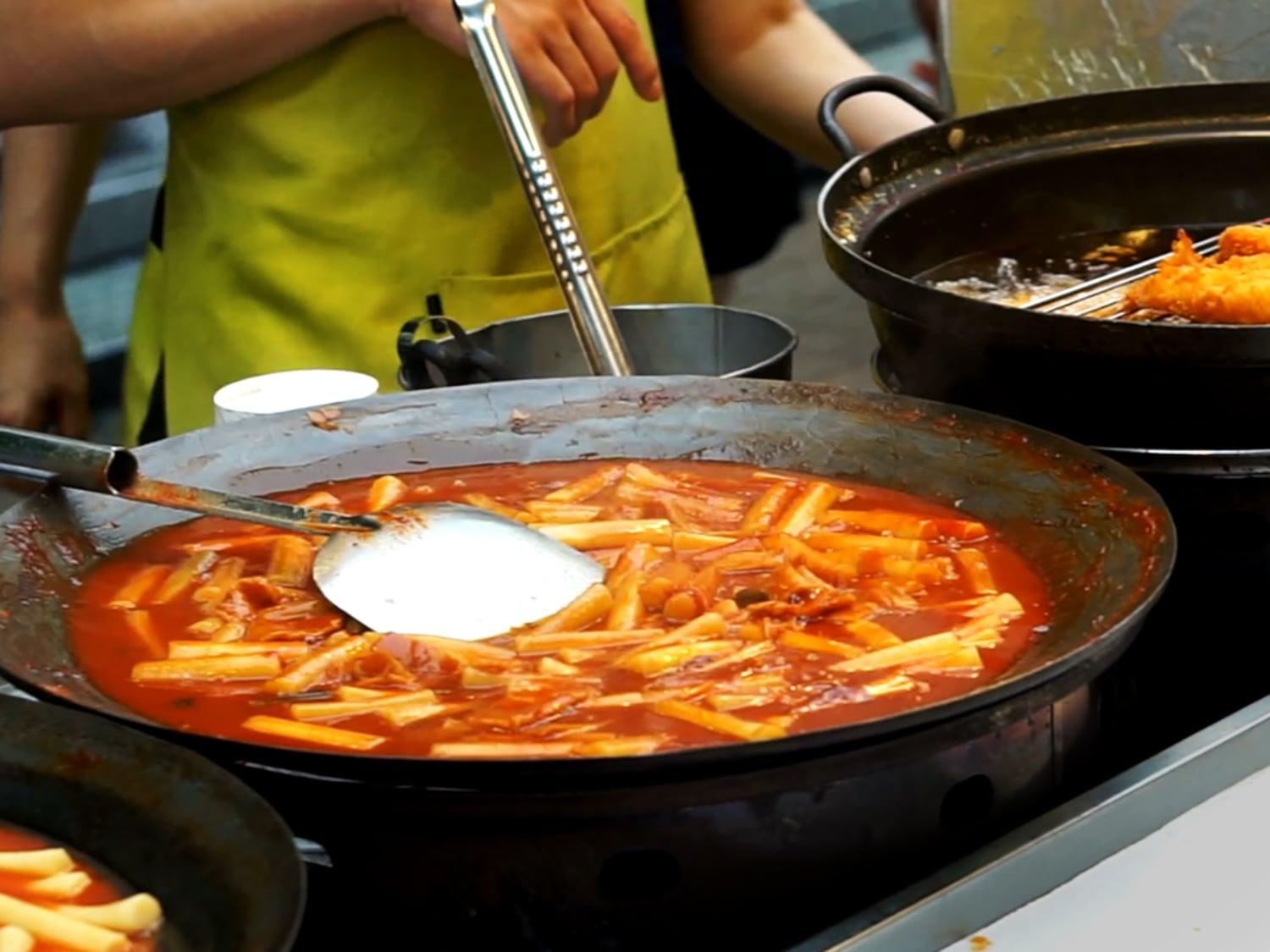
Tteokbokki, meanwhile, is a street food that can be found in roadside carts in Seoul or any other South Korean city. It combines steamed rice cake with a sweet-spicy gooey sauce, and is often sold with boiled eggs, odeng fish sausage, and often paired with soju, the distilled alcoholic drink.
Literally translated as “three-layer meat,” samgyeopsal is pork belly. It’s the same cut used for bacon and is named for the three layers of fat that separate the meatier parts of the cut. Meat is extremely rare in the diet of typical North Koreans, but is readily available in the South.
Samgyeopsal is typically cooked on a heated griddle or over an open flame, then sliced and enjoyed with a variety of condiments. It’s often wrapped in lettuce with rice, raw or roasted garlic, chili pepper and other ingredients.
All of these dishes appeared recently in restaurants run by Chinese-citizen residents, the merchant said.
“They began to be sold in restaurants in the Yangsun Department Store, which has operated as a joint venture with China, since around 2017,” she said. “Until now, there were no restrictions on selling these foods.
No explanation given
According to the merchant, the authorities have not explained why they are banning tteokbokki and budae-jjigae. Samgyeopsal remains available because it is not quite as popular as the other two.
“Samgyeopsal is a popular food in high-end restaurants in Pyongyang and other regions, so it will likely be subject to crackdowns in the future,” she said.
RELATED RFA CONTENT
North Korea swaps soybean-based doenjang paste with wheat-based imitation
South Korean Snacks and Sauces Find Market in North Korea Despite Import Ban
The state is also taking a hit by banning these South Korean style foods because they have become popular at government-run restaurants, an intellectual from the same province who requested anonymity for security reasons told RFA.
“People are well aware of the fact that tteokbokki and budae-jjigae are foods that originated in South Korea through illegally distributed South Korean movies,” he said.
“There are different opinions from each region as to where tteokbokki and budae-jjigae were first sold in North Korea,” he said. “Ryanggang Province residents believe that it started at our Yangsun Department Store … but people in other provinces boast that it started somewhere in their region.”
The two banned dishes, while relatively inexpensive and not considered particularly classy in the South, are luxuries in the North.

At the marketplace, tteokbokki costs 3,000 won (12 US cents) and budae-jjigae costs 6,000 won (25 cents), according to the source. In department stores tteokbokki costs 15,000 won (62 cents) and budae-jjigae costs 24,000 won ($1).
For context, rice, considered a luxury in North Korea, costs 9,500 won (43 cents) per kilogram (2.2 pounds).
The intellectual said there was considerable opposition from business owners and residents to the crackdown, and many protested that the ban makes no sense when American and Western food items like hamburgers and sandwiches are not targeted by bans.
“The position of food vendors and residents is that tteokbokki and budae-jjgae are not just South Korean food, but are also food enjoyed by ethnic Koreans in Yanbian,” he said, referring to the Korean Autonomous prefecture in China, home to an estimated 620,000 residents of Korean descent.
“Residents say that there is no ideology in the food, but the authorities are only punishing powerless vendors for no reason.”
Translated by Leejin J. Chung. Edited by Eugene Whong and Malcolm Foster.
This content originally appeared on Radio Free Asia and was authored by Moon Sung Whui for RFA Korean.
This post was originally published on Radio Free.
This content originally appeared on Radio Free Asia and was authored by Radio Free Asia.
This post was originally published on Radio Free.
KUALA LUMPUR – Malaysia and Vietnam have agreed to elevate ties and cooperate closely to maintain peace in the South China Sea, following a rare protest by Kuala Lumpur over Hanoi’s island-building program in the disputed waterway.
The two Southeast Asian countries are among six parties that have overlapping territorial claims in the sea, alongside China, Brunei, the Philippines as well as Taiwan.
Malaysia and Vietnam pledged to “continue working closely together to maintain peace, security, stability, safety and freedom of navigation and overflight in the South China Sea and to promote peaceful settlement of disputes,” To Lam, general secretary of the Communist Party of Vietnam, said during a joint press briefing with Malaysian Prime Minister Anwar Ibrahim in Malaysia’s administrative capital, Putrajaya, on Thursday.
The ties between the two countries will be elevated to a “comprehensive strategic partnership” that will help the two sides boost their cooperation in various areas, such as defense and security, according to Lam.
Malaysia is the first, and only, ASEAN country to establish a comprehensive strategic partnership with Vietnam. The eight other comprehensive strategic partners of Vietnam are China, Russia, India, South Korea, the United States, Japan, Australia and France. Singapore and Vietnam are also expected to upgrade their partnership to the highest level early next year, when Singapore Prime Minister Lawrence Wong makes a planned visit to Hanoi.
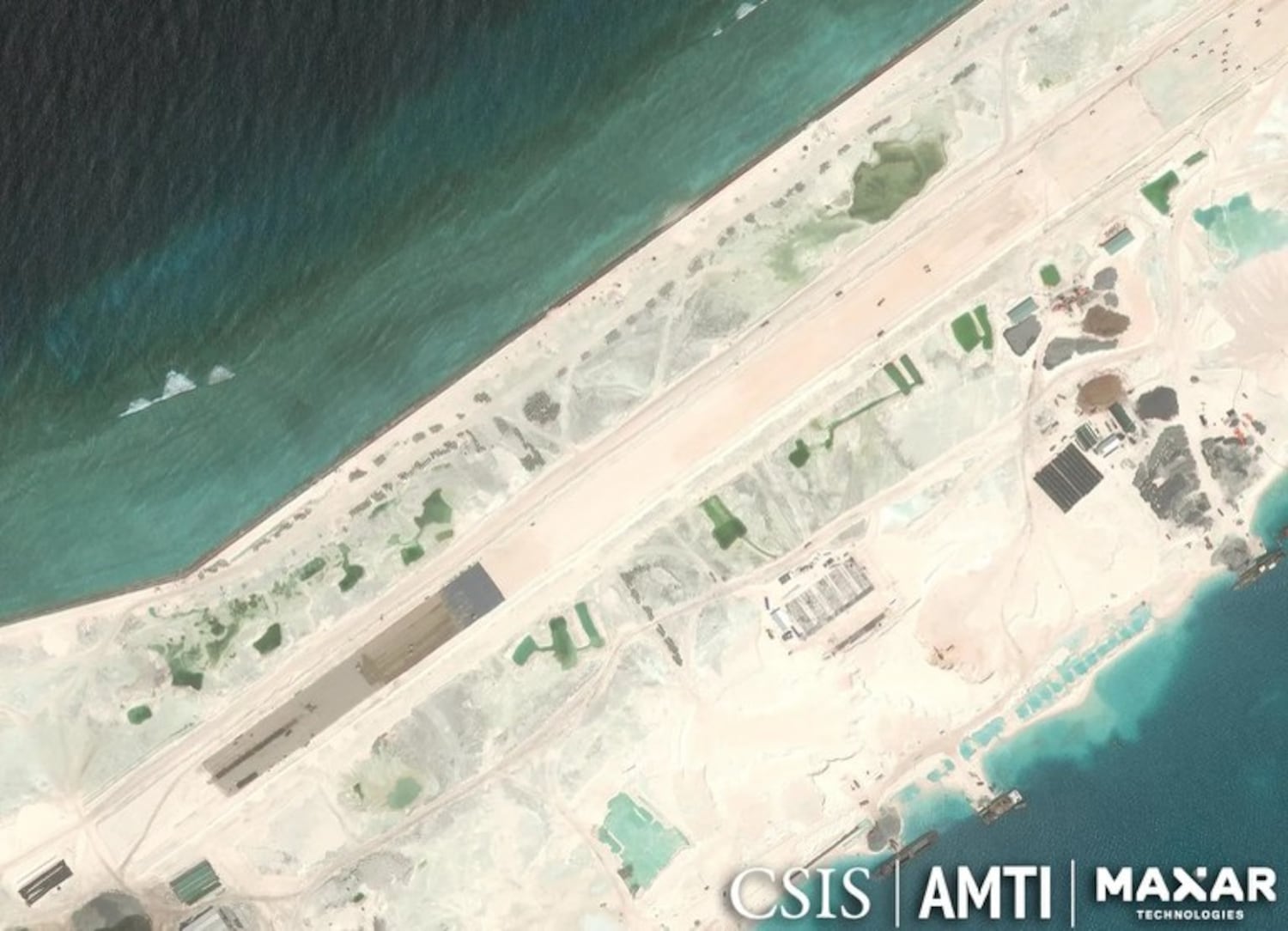
Last month, Malaysia filed a protest over Vietnam’s island-building program in the disputed waters, the Reuters news agency reported. The report said Malaysia had complained about Vietnam’s development of an airstrip on Barque Canada reef, a feature in the Spratly Islands chain that Kuala Lumpur also claims.
The “comprehensive strategic partnership” is the highest level in Vietnam’s diplomatic hierarchy of official engagements with other nations. Other countries that have similar partnerships with Vietnam include the United States, China, Russia, and Japan.
“We will continue to work closely to expand and deepen our friendship and political trust between the two countries based on respect for each other’s national law and respect for its political system, sovereignty and territorial integrity in line with law and regulation based on the principle of non-interference,” Lam said.
Kuala Lumpur and Hanoi also “agreed to explore the possibility of having joint efforts in the fishing industry so that we can really work on the basis of trust and friendship,” Anwar said in his speech.
Over the years, there have been frictions between the two countries tied to fishing. For example, Malaysian fishermen have accused their Vietnamese counterparts of encroaching on catches of squid through illegal, unreported and unregulated (IUU) fishing in Malaysian waters.
RELATED STORIES
Malaysia objects to Vietnam’s South China Sea island building: media
Malaysia protests new Philippine maritime zones laws for South China Sea
Vietnam files new claim on boundary in South China Sea
Both Malaysia and Vietnam are member-states of the Association of Southeast Asian Nations. Malaysia is Vietnam’s second-biggest trade partner and the third-largest foreign investor in ASEAN, according to Hanoi.
“Vietnam will support Malaysia in its ASEAN chairmanship next year and will continue working closely with Malaysia and other ASEAN member states to realize the ASEAN Blueprint of 2025,” Lam said.
The two leaders also witnessed the signing of memorandums to enhance cooperation in various areas such as trade promotion and renewable energy.
“Vietnam has been very supportive of our business ventures in their country, which now exceed U.S. $13 billion with 700 projects,” Anwar said.
It was Lam’s first official visit to Malaysia since becoming Vietnam’s general secretary in August.
Lam’s three-day trip was also the first time a Communist Party of Vietnam chief had visited Kuala Lumpur since 1994, a year before Hanoi formally joined ASEAN.
BenarNews is an RFA-affiliated online news organization.
This content originally appeared on Radio Free Asia and was authored by BenarNews staff.
This post was originally published on Radio Free.
This content originally appeared on Radio Free Asia and was authored by Radio Free Asia.
This post was originally published on Radio Free.
KUALA LUMPUR – Malaysia said it is protesting two new Philippine maritime laws that it contends encroach on its South China Sea boundaries, in a move that comes amid heightened regional tension over Beijing’s increasing assertiveness about its expansive claims.
In October, Malaysia lodged a complaint against Vietnam, Reuters news agency reported last week.
One security analyst said that despite regional tension, there is little risk of confrontation between Malaysia and the Philippines, or Vietnam, while a regional observer said Manila and Hanoi were the transgressors in both cases.
Malaysian Deputy Foreign Minister Mohamad Alamin told his country’s parliament on Thursday that the new Philippine laws encroach on Malaysia’s oil-rich state of Sabah, which borders the South China Sea.
“We’ve finalized and reviewed key issues in our protest note, which we’ll send today [Thursday] to affirm our commitment to protecting Sabah’s sovereignty and rights,” Alamin said, referring to the state that is claimed by both Malaysia and the Philippines.
Manila on Nov. 8 enacted the Philippine Maritime Zones Act and Archipelagic Sea Lanes Act, which Alamin said extend into Malaysia’s boundaries mapped out in 1979, which Kuala Lumpur regards as internationally recognized.
The Philippines had said the laws were intended to declare Manila’s maritime claims in accordance with the United Nations Convention on the Law of the Sea (UNCLOS) and restrict foreign ships and aircraft to designated lanes.
Philippine officials did not immediately respond to Alamin’s comments.
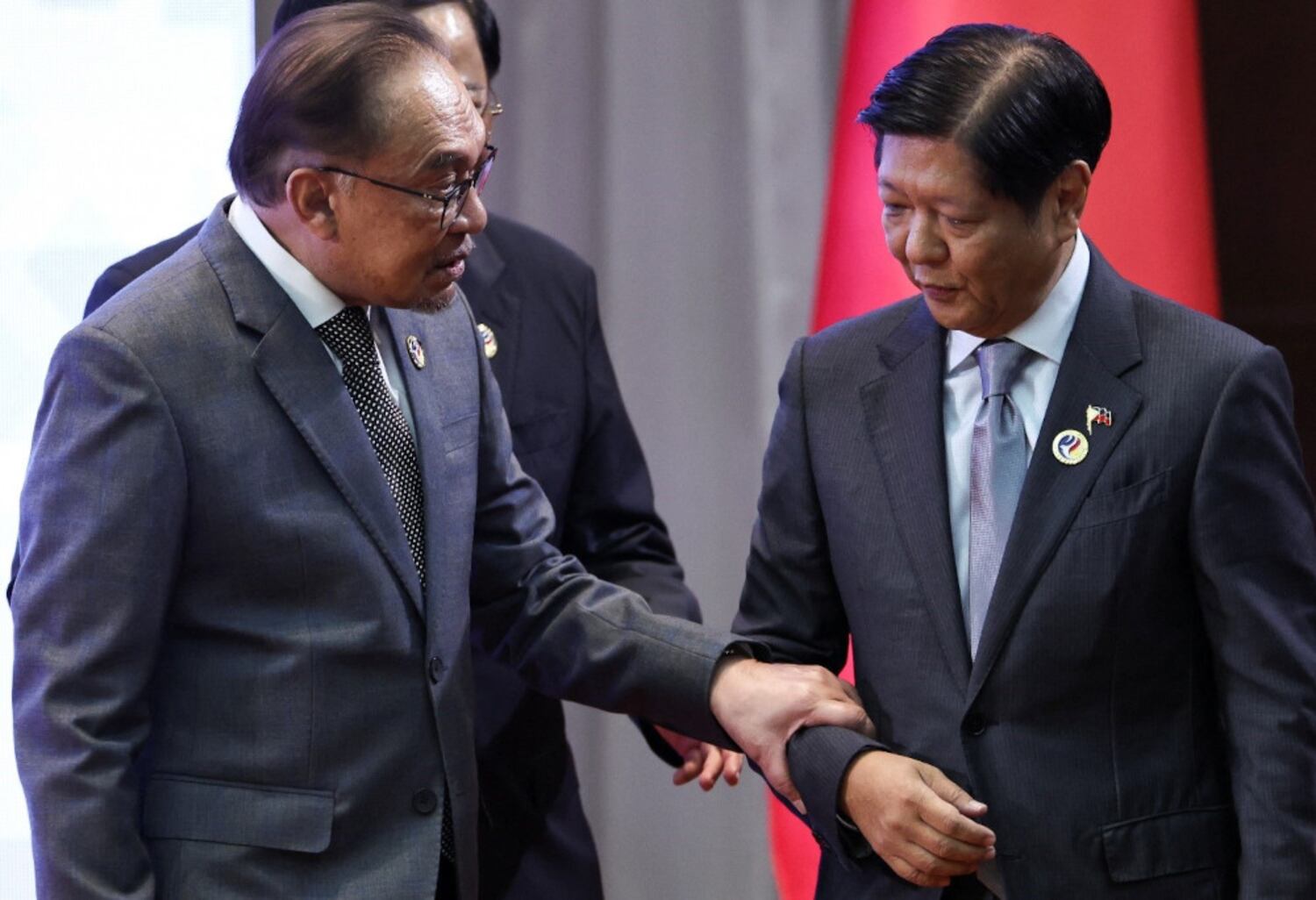
Located off the southwestern region of the Philippines, Sabah has long been a thorny issue between the neighboring countries.
In September 2020, the two countries took their dispute over who owns Sabah to the United Nations. The dispute remains unresolved.
Separately, in June 2023, a Paris court upheld Malaysia’s challenge to a U.S. $15 billion arbitration award to purported heirs of an erstwhile ruler of the Sultanate of Sulu. Part of the former sultanate is in Sabah.
An arbitration court in Paris had in February 2022 ordered Malaysia to pay that amount to settle a colonial-era land deal.
The former Sultanate of Sulu was situated in a small archipelago in the far southern Philippines.
RELATED STORIES
Vietnam expands strategic capabilities in South China Sea
Vietnam builds airstrip on reclaimed island in South China Sea
East Asia fails to adopt South China Sea statement amid finger pointing
Philippines enacts laws asserting maritime claims; annoyed Beijing summons Manila’s envoy
An analyst at the non-profit Yokosuka Council on Asia-Pacific Studies said Malaysia has had to deal with the Philippines’ expansion efforts in the South China Sea.
“From the point of view of Malaysia, the Philippines is the troublemaker-in-chief,” Benjamin Blandin, a network coordinator at the council, told BenarNews.
He said the Philippines destroyed Malaysian sovereignty markers in the Spratlys, a South China Sea island chain, in the 1970s and 1980s and later occupied Commodore Reef within the Malaysian exclusive economic zone.

A country’s EEZs extends up to 200 nautical miles from its coastline.
“So based on this bilateral ‘history,’ Malaysia can only interpret negatively any further move of the Philippines, at least as long as the Sabah case is not solved,” Blandin said.
He added that Vietnam had also destroyed markers at two maritime features in Malaysia’s EEZ before occupying them.

Another analyst, Shahriman Lockman at the Institute of Strategic and International Studies Malaysia, told BenarNews he blamed Vietnam’s actions.
“Recent reports of Malaysia’s protest note to Vietnam, if accurate, reflect a growing impatience with Vietnam’s recalcitrance in the South China Sea and reluctance to engage in constructive discussions – behavior that deserves as much attention as China’s,” Lockman, a senior analyst at the institute told RFA affiliate BenarNews.
“Even so, I don’t anticipate any major escalation as long as Vietnam tries to restrain its fishermen who have a tendency to intrude into foreign EEZs, not only in Southeast Asia but across the Asia Pacific.”
Similarly, “unless Manila actively pursues its legal claims, I don’t see a high risk of confrontation with Malaysia,” Lockman said.
“This [complaint] is just a routine aspect of diplomatic relations – a typical day at the office for our diplomats. …As countries build the legal foundations for their territorial and jurisdictional claims, it’s inevitable that overlaps are going to be reiterated.”
Overlapping claims
Malaysia, the Philippines, Vietnam, China, Brunei and Indonesia, as well as Taiwan, hold overlapping claims in the South China Sea and its islands and reefs.
Beijing claims nearly all of the sea as its own based on so-called historic rights, which were invalidated in a 2016 arbitration ruling by the international court in The Hague,
Since the Philippines enacted its two new laws, Beijing and Manila have launched protests against each other over contested South China Sea claims.
Following Beijing’s protest, Philippine President Ferdinand Marcos Jr. on Thursday said his government would maintain its stance on its South China Sea territories, the state-run Philippine News Agency reported.
“[T]hey will continue to protect what they define as their sovereign territory,” he told journalists.
“Of course, we do not agree with their definition of sovereign territory.”
BenarNews is an RFA-affiliated online news organization.
This content originally appeared on Radio Free Asia and was authored by Iman Muttaqin Yusof for BenarNews.
This post was originally published on Radio Free.
Comprehensive coverage of the day’s news with a focus on war and peace; social, environmental and economic justice.

(U.S. Senator John Thune speaking with attendees at the Republican Jewish Coalition’s 2023 Annual Leadership Summit at the Venetian Convention & Expo Center in Las Vegas, Nevada. / Gage Skidmore, flikr)
The post South Dakota’s John Thune elected next Republican Senate leader – November 13, 2024 appeared first on KPFA.
This content originally appeared on KPFA – The Pacifica Evening News, Weekdays and was authored by KPFA.
This post was originally published on Radio Free.
JAKARTA – Indonesia is seeking to contain the fallout from a maritime cooperation agreement with China that analysts say appears to indicate a softening of Jakarta’s stance on Beijing’s expansive claims in the South China Sea.
A joint statement released after a meeting between Indonesian President Prabowo Subianto and Chinese President Xi Jinping in Beijing on Saturday said the two countries had reached an “important common understanding on joint development in areas of overlapping claims.”
This “understanding” or agreement compromised Indonesia’s territorial and maritime rights, most regional experts said.
One security analyst. though, noted on X that a clause stating that the cooperation would proceed only under the laws of both countries may mean the agreement will end up dead in the water.
Jakarta had consistently rejected the Beijing-set boundary, which encompasses most of the South China Sea and encroaches into Jakarta’s exclusive economic zone (EEZ) north of the Natuna islands, noted Eddy Pratomo, an ex-member of the Indonesian government’s law of the sea negotiation team.
“[But] with this Indonesia-China joint statement, it appears Indonesia is now acknowledging overlapping claims,” Eddy, an international law professor at Diponegoro University, told RFA affiliate BenarNews.
“This could be seen as tacit recognition of China’s dashed-line claim over the South China Sea, particularly around the North Natuna Sea,” he said.
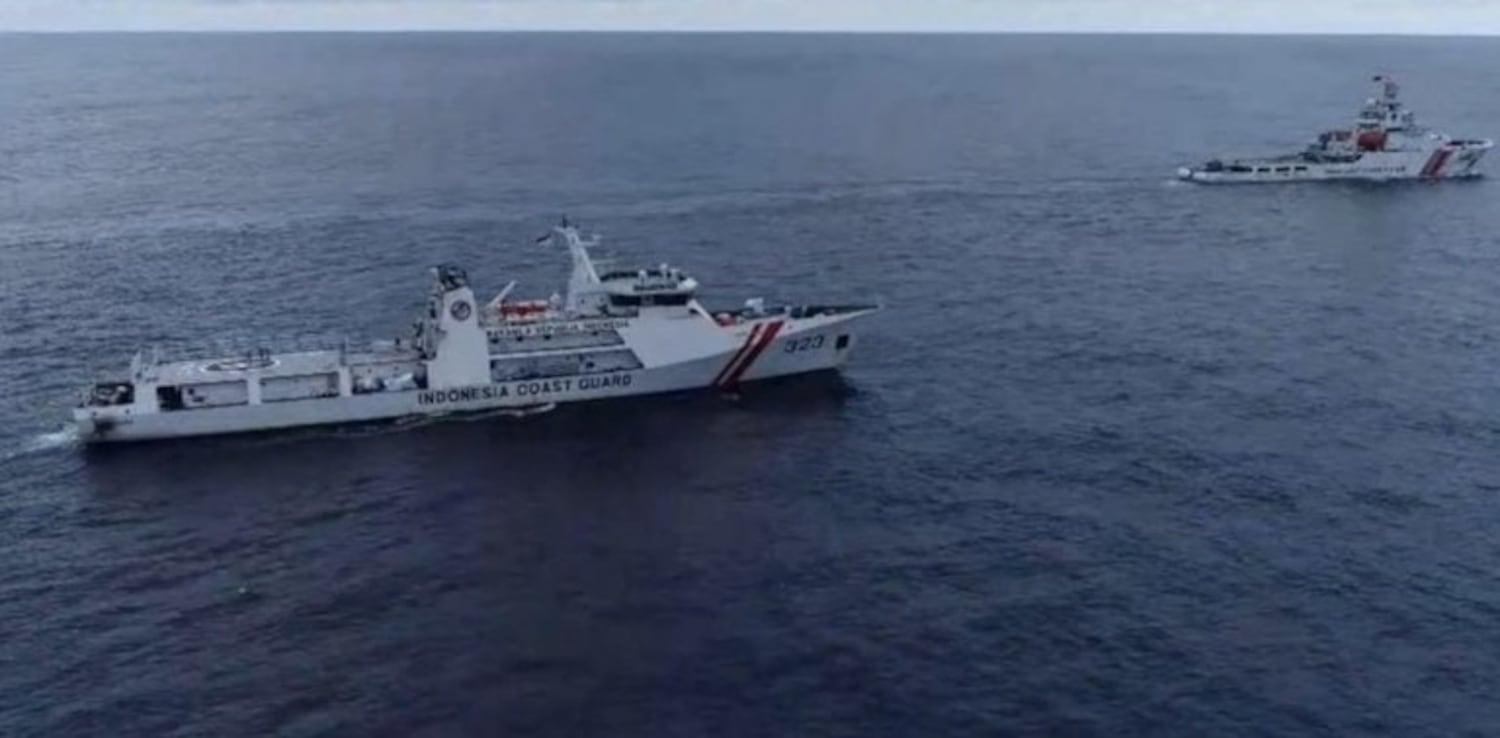
Beijing uses the nine-dash line on maps to demarcate its extensive claims in the South China Sea, where it is embroiled in territorial disputes with Brunei, Malaysia, the Philippines and Vietnam in regional bloc Association of Southeast Asian Nations (ASEAN), as well as Taiwan.
Eddy warned that China could use the agreement with Indonesia to pressure these claimant states to accept the nine-dash line.
This China-drawn boundary infringes on the claimant states’ EEZs that give these countries exclusive rights to up to 200 nautical miles from their coastlines to regulate fishing and exploit natural resources, he said.
The Indonesia-China joint statement did not specifically say the two countries would cooperate on projects for oil and gas discovery or extraction, although that is the activity that Jakarta mainly carries out in its South China Sea EEZ, which it has named North Natuna Sea.
The Indonesian Foreign Ministry attempted damage control and issued a statement Monday, saying the agreement did not amount to a recognition of Beijing’s line.
“Nothing in the cooperation may be construed in any way as a recognition of the ‘9-Dash Line’ claim. Indonesia maintains its well-known position that the claim lacks an international legal basis and is tantamount to undermining the UNCLOS 1982,” the statement said.
“Therefore, the cooperation shall, under no circumstances, affect Indonesia’s sovereignty, sovereign rights, or jurisdiction in the North Natuna Sea.” UNCLOS is the U.N. Convention on the Law of the Sea.
The Indonesian Foreign Ministry said the cooperation would mainly be in the fields of fisheries and fisheries conservation in the region.
BenarNews reached out to foreign ministry spokesman Roy Soemirat for details on how the agreement came about and whether Jakarta had vetted the text, but did not hear back from the official.
The agreement comes amidst a backdrop of escalating tensions in the South China Sea, a crucial maritime route for global commerce.
Just last month, during the first week of Prabowo’s presidency, Indonesian naval and coast guard vessels confronted and expelled a Chinese coast guard ship from Indonesia’s exclusive economic zone in the North Natuna Sea on three occasions
‘China’s nine-dash line trap’
Backlash to news about the agreement was swift, both at home and abroad, despite the foreign ministry’s statement on Monday.
Aristyo Rizka Darmawan, a lecturer in International law at Universitas Indonesia, slammed as “vague” the Indonesian foreign ministry’s statement that it still did not recognize the nine-dash line.
The ministry’s statement “contradicts the joint statement and was released unilaterally, while the joint statement was made by Indonesia and China together,” he wrote in an analysis published Tuesday for The Lowy Institute, an Australian think-tank.
That means it’s possible that China may continue to hold the interpretation presented in the join statement, he further wrote.
“Indonesia appears to be the first ASEAN member-state to implicitly recognize Beijing’s ‘nine-dash line’ … and therefore the first ASEAN country to fall into China’s nine-dash line trap,” Aristyo added.
He further said that the agreement had betrayed Indonesia’s national interest.
“It is consequential for Indonesia’s sovereign rights to use resources in its EEZ and continental shelf, and [the agreement] has significantly changed the political constellation and solidarity of ASEAN claimant states in the South China Sea,” he wrote.
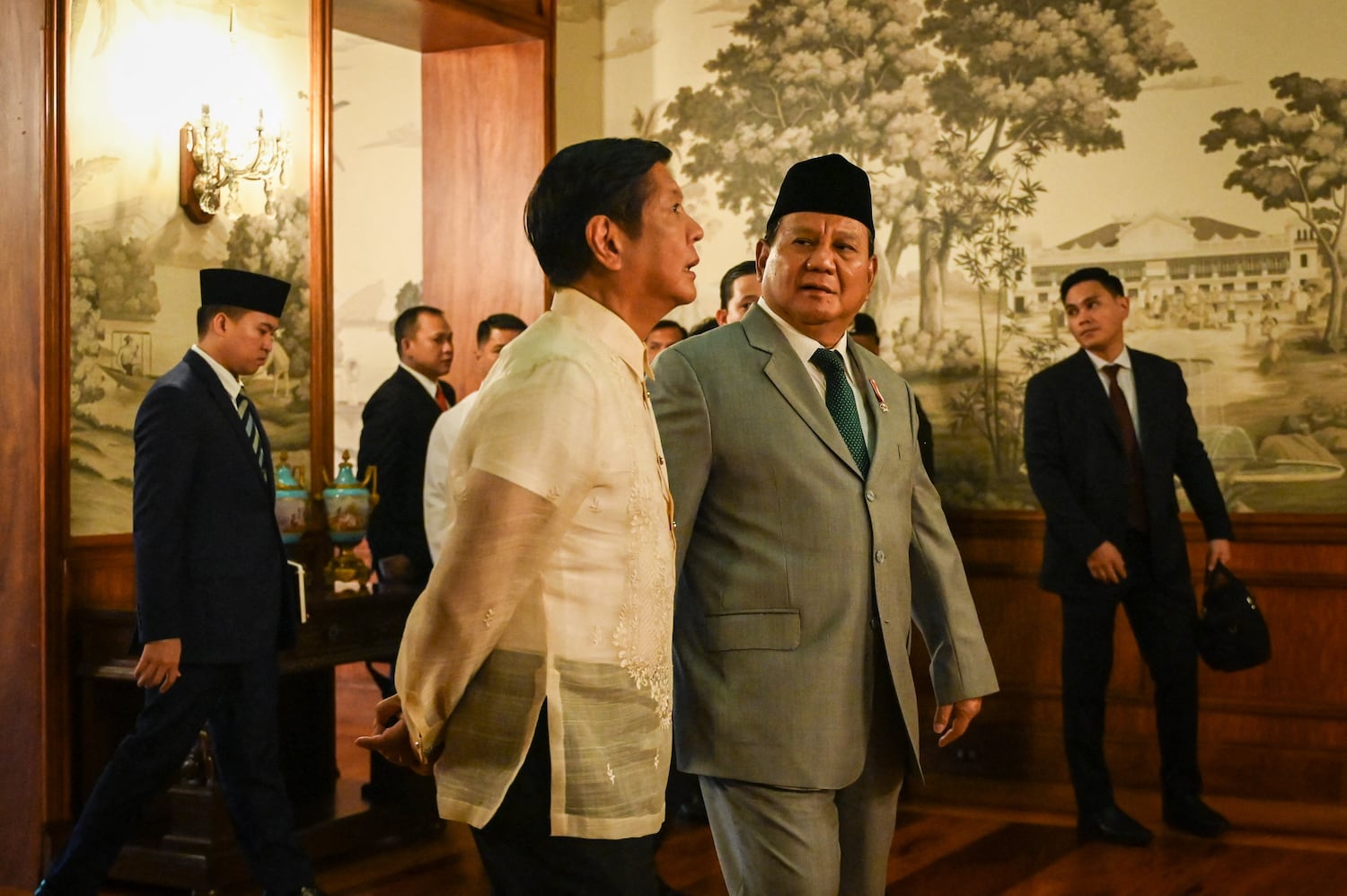
Opposition lawmaker Tubagus Hasanuddin, a member of the defense and foreign affairs committee in Indonesia’s House of Representatives, questioned the government’s approach to handling sensitive regional issues, particularly concerning the South China Sea.
“The Foreign Ministry needs to exercise greater caution and responsiveness in handling official statements,” he said in a press release.
“They shouldn’t act as a ‘firefighter’ only when problems arise.”
He also raised concerns about the potential consequences of such an agreement for Indonesian fishermen, citing past instances of Chinese vessels entering Indonesian waters and engaging in illegal fishing.
“Will this economic cooperation benefit us? Will Chinese fishing vessels then be free to roam in the Natuna area to catch our fish?”
One clause in the joint cooperation agreement, however, could mean it would not go through, said Euan Graham, senior analyst at The Australian Strategic Policy Institute.
“[T]he reference to “prevailing laws” means [the] agreement may be difficult for Prabowo to push through,” he noted on X.
The part of the joint statement Graham is referring to says that the joint development would be “based on the principles of ‘mutual respect, equality, mutual benefit, flexibility, pragmatism, and consensus-building,’ pursuant to their respective prevailing laws and regulations.”
Several analysts noted that Prabowo or Foreign Minister Sugiono needed to soon clarify what exactly the joint development was referring to and how the wording got into the joint statement.
‘Potential slippery slope’
The Indonesia-China joint development agreement has consequences not just for Indonesia but could potentially reshape geopolitical dynamics in Southeast Asia and draw responses from the United States and Japan, said international law expert Hikmahanto Juwana.
“Countries in dispute with China will question Indonesia’s position,” Hikmahanto, a University of Indonesia professor, told BenarNews.
The Indonesian government’s agreement with China might reflect a pragmatic alignment with a major political power, but it could potentially destabilize the region, said Muhammad Waffaa Kharisma, an international relations researcher at the Centre for Strategic and International Studies (CSIS).
“In the short term, this statement may benefit Indonesia by easing tensions with China, particularly by reducing the likelihood of coast guard confrontations in the South China Sea,” he said.
“However, in the long term, it could harm Indonesia’s standing with Southeast Asian neighbors. This is a potential slippery slope.”
Pizaro Gozali Idrus in Jakarta contributed to this report.
BenarNews is an RFA-affiliated online news organization.
This content originally appeared on Radio Free Asia and was authored by Arie Firdaus for BenarNews.
This post was originally published on Radio Free.
Read RFA coverage of this topic in Burmese.
Myanmar’s junta has announced that passports renewed “illegally” in South Korea would be canceled, the latest step in its efforts to crack down on its opponents abroad and to force citizens to return home, where they are liable to be conscripted into the military.
At the heart of the wrangle over passports is the question of who has the legitimacy to represent Myanmar – the deeply unpopular military that seized power in a 2021 coup, or members of the elected government it ousted who have set up a shadow administration in exile.
Radio Free Asia’s Burmese service reported on Tuesday that there has been an increasing number of Myanmar citizens renewing their passports in the South Korean capital at the representative office of the government-in-exile, the National Unity Government, or NUG.
But the junta-appointed Myanmar embassy in Seoul warned that passports renewed that way would be canceled and their bearers would be blacklisted.
“We are taking action against those who renewed their passports with illegal stamps, in accordance with South Korean law,” said the embassy.
“The embassy is discussing the issue with the South Korea government ministries concerned to take action,” it added.
South Korea’s foreign ministry said it is aware of the matter and was checking the facts and legal aspects.
“If necessary, appropriate measures will be reviewed in consultation with relevant ministries,” the ministry told RFA on Wednesday.
RFA contacted the junta’s main spokesperson, Maj. Gen. Zaw Min Tun, for comment but did not receive a reply by publication time.

Myanmar has been in turmoil since the military ousted a government led by democracy champion Aung San Suu Kyi in February 2021, ending a decade of gradual reforms that had raised hopes for an end to decades of poverty and repression under the military.
People of all ages and walks of life took to the streets across the country to protest against the coup.
The military responded with bullets and large numbers of people fled to places such as Thailand, Malaysia, Japan and South Korea, either in fear of prison or looking for opportunities as the upheaval crippled the economy.
More fled military conscription enforced this year as junta forces struggled against ethnic minority insurgents and their new pro-democracy allies.
Thousands hope for new passports
Many of those who fled are now holding passports that are expiring, which junta-controlled embassies often refuse to renew, or only do so after detailed family background checks and if applicants sign pledges not to participate in politics.
Those without valid passports find it nearly impossible to renew visas to stay on in the countries where they are living.
So instead of relying on embassies, an increasing number of people in South Korea are turning to the NUG for passport renewals, a source close to the shadow government’s office in Seoul said.
“More than 500 people from Myanmar have renewed their passports through the NUG office. The number is expected to reach into the thousands,” said the source who declined to be identified given the sensitivity of the issue.
“More people are contacting the NUG office every day to prepare their documents for passport renewal. The number of applicants is growing steadily.”
In the weeks after Myanmar’s coup, South Korea created what is known as the G1-99 visa, allowing Myanmar people to stay on humanitarian grounds. But the Myanmar embassy initially refused to renew passports with that visa, said one Myanmar national in Soul.
“Later, they accepted this visa for an extension but applicants need to sign a pledge (not to engage in politics) to get the passport. So we opted for NUG’s passport renewal service,” said the Myanmar citizen who declined to be identified.
The NUG office in Seoul said on Sunday that it was protecting Myanmar citizens who opposed the junta as much as it could, in addition to working for the release of Myanmar people arrested in South Korea for violating visa rules.
The office said the passports it renewed were only valid to stay in South Korea.
RELATED STORIES
Myanmar’s junta halts passport conversion as Thailand mulls worker amnesty
UN labor watchdog to take action against Myanmar junta
Myanmar junta expands mandatory remittance for migrant workers
Those facing no option but to go home, or being deported back, risk being forced into the military, numerous people have reported.
A Yangon-based job agent helping workers go to South Korea told RFA that the NUG’s passport renewal would only be a temporary fix and anyone hoping to return to Myanmar would face problems.
“The NUG passport will not be accepted by the junta. Having said that, it depends if individuals are staying long-term in South Korea,” he said.
“Those holding NUG passports can’t legally return home, as long as we’re under the military regime, but they can stay overseas.”
More than 70,000 Myanmar citizens are in South Korea under labor agreements between the two countries, according to media reports.
Translated by RFA Burmese. Edited by Kiana Duncan and Taejun Kang.
RFA Korean’s Lee Jeongeun contributed to this report.
This content originally appeared on Radio Free Asia and was authored by RFA Burmese.
This post was originally published on Radio Free.
An image of a boat full of people has been shared in Korean-language social media posts that claim it shows people fleeing South Vietnam after its defeat by communist forces of then North Vietnam in 1975.
But the claim is false. The image in fact shows asylum seekers rescued by the Italian navy off the coast of north Africa.
The image was shared on Facebook on Sep. 30, 2024. The image was later taken down.
“People fleeing after the demise of South Vietnam. This is what happens when you follow leftwings,” reads the clam.
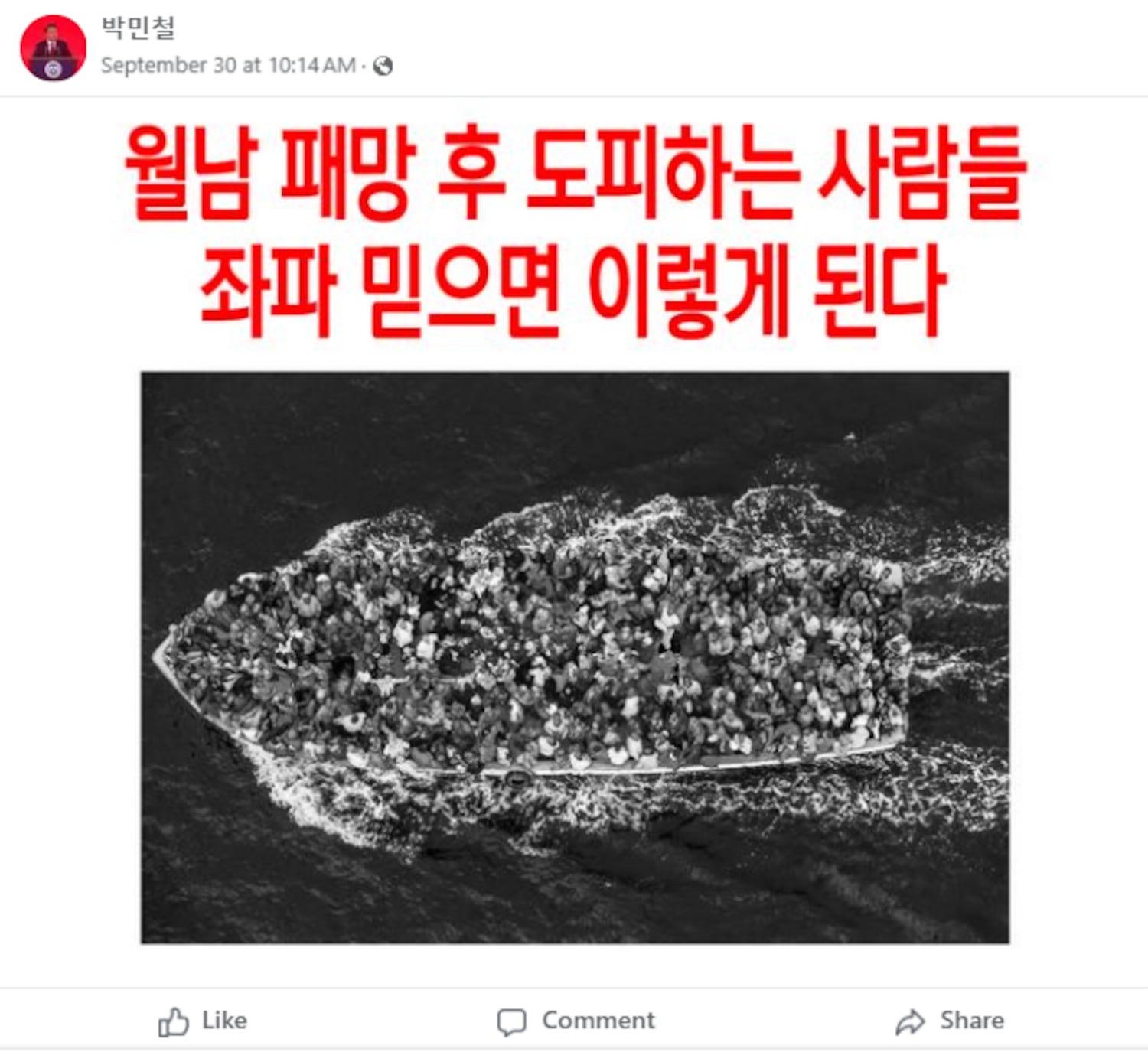
In 1975, the city of Saigon, then the capital of South Vietnam, fell to North Vietnamese forces, marking the end of the Vietnam War and the unification of the country. This also triggered a mass exodus of refugees from the south.
But the claim shared in the September post is false. The image in fact shows asylum seekers rescued by the Italian navy off the coast of north Africa.
A reverse image search found the original photo on the website of Italian photographer Massimo Sestini, alongside other photos of the same scene from different angles.

The caption of the image, dated June 7, 2014, reads: “20 miles off the Libyan coast”.
A further reverse image search found the same photo was published in reports by multiple international media outlets, including the Wall Street Journal in a report here on March, 26, 2015.
The caption of the photo, credited to Sestini, reads:
“Immigrants attempting to cross the Mediterranean to seek asylum in Europe have disrupted shipping. Above, the Italian navy rescued shipwrecked immigrants off the coast of Africa in June.”
Edited by RFA Staff.
Asia Fact Check Lab (AFCL) was established to counter disinformation in today’s complex media environment. We publish fact-checks, media-watches and in-depth reports that aim to sharpen and deepen our readers’ understanding of current affairs and public issues. If you like our content, you can also follow us on Facebook, Instagram and X.
This content originally appeared on Radio Free Asia and was authored by Taejun Kang for RFA.
This post was originally published on Radio Free.
China has announced the baselines of its territorial sea around the Scarborough Shoal to strengthen its claim over the South China Sea feature that lies within the Philippines’ exclusive economic zone.
China has also formally named 64 islands and reefs, many of which are claimed by several countries, risking escalating tensions with its neighbors.
A baseline under the U.N. Convention on the Law of the Sea, orUNCLOS, is a line that runs along the coast of a country or an island, from which the extent of the territorial sea and other maritime zones such as the exclusive economic zone and extended continental shelf are measured.
A foreign ministry’s spokesperson in Beijing said in a statement on Sunday that the Chinese government delimited and announced the baselines of the territorial sea adjacent to Huangyan Dao “in accordance with international law,” referring to the shoal by its Chinese name.
“This is a natural step by the Chinese government to lawfully strengthen marine management and is consistent with international law and common practices,” the ministry said, adding: “Huangyan Dao has always been China’s territory.”
Radio Free Asia contacted the Philippine foreign department for comment but did not receive a reply by the time of publication.

Scarborough Shoal, known in the Philippines as Bajo de Masinloc, is a triangular chain of reefs about 125 nautical miles (232 kilometers) from Luzon, the main Philippine island. Claimed by China, the Philippines and Taiwan, the shoal has been under Beijing’s de-facto control since 2012.
In 2016, an U.N. arbitration tribunal ruled against all of China’s claims to the reefs in the South China Sea, including to the Scarborough Shoal. It also ruled that Scarborough Shoal is a rock, not an island, which means that even if the shoal is entitled to a 12-nautical-mile territorial sea, it cannot generate an exclusive economic zone but instead is recognized as part of the exclusive economic zone and continental shelf of the Philippines.
‘Cornering the Philippines’
Beijing’s announcement came right after Manila passed the Maritime Zones Act and the Archipelagic Sea Lanes Law, which China “strongly condemns and firmly rejects,” according to the Chinese foreign ministry. The ministry also reiterated that China had neither accepted nor participated in the 2016 arbitration, nor did China accept or recognize the ruling.
Also on Sunday, the Chinese ministries of natural resources and of civil affairs announced Chinese standard geographical names for 64 islands and reefs in the South China Sea, including several features within the Second Thomas Shoal and Sabina Shoal, both also claimed by the Philippines, Vietnam and Taiwan.
The naming is seen by analysts as to assert China’s sovereignty over the features.
“China is really pushing the Philippines to the corner, now Manila has no choice but to respond,” said a regional South China Sea expert who declined to be identified because they are not authorized to speak to the media.
“As the formalization of names is also related to Vietnam’s claims over some South China Sea features, I expect the Vietnamese government to react in the near future,” added the expert, “This is an escalation of tension on China’s part.”
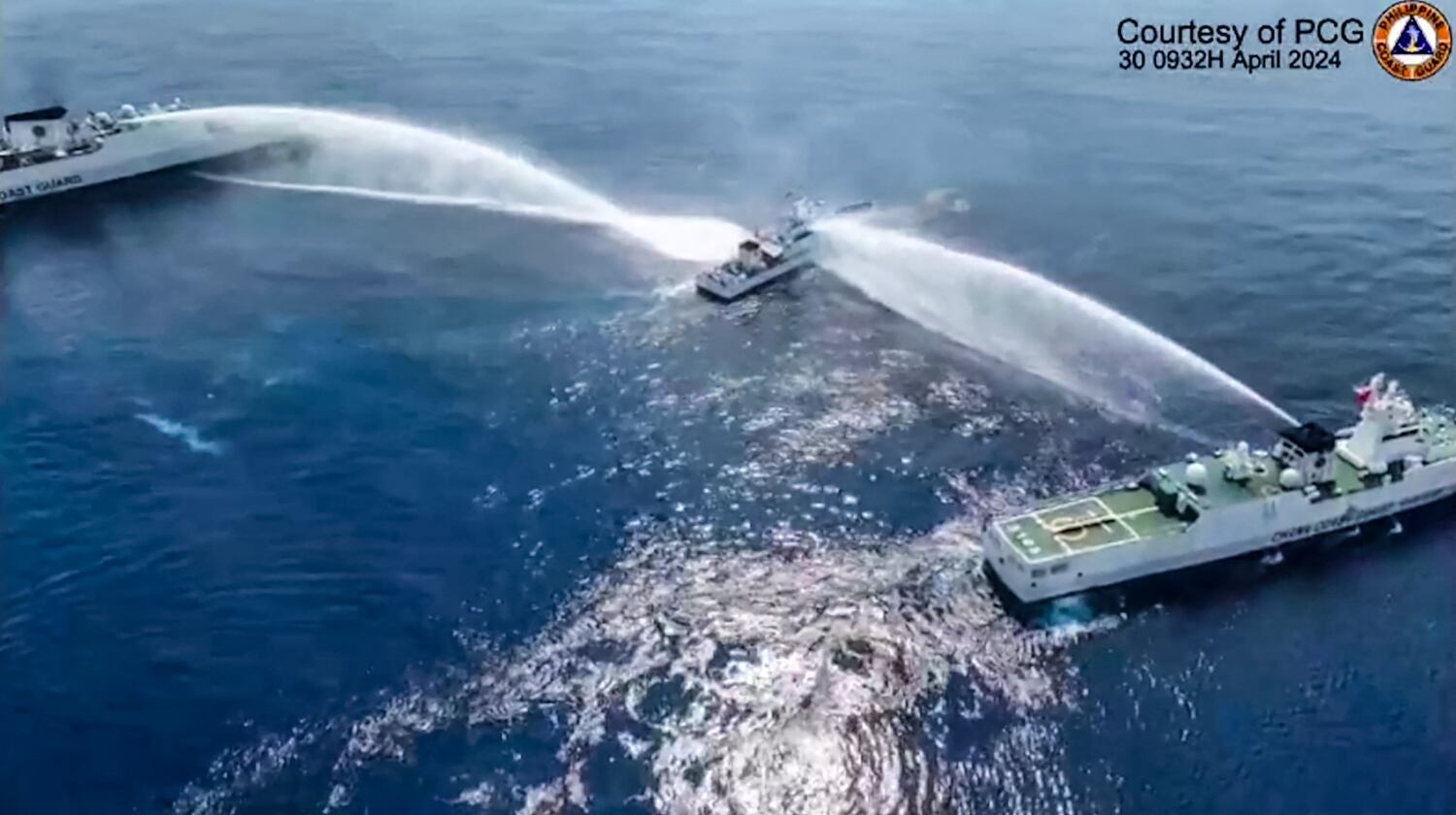
Separately, Jay Batongbacal, a maritime expert from the University of the Philippines College of Law, told RFA that “China’s reaction and statements are not unexpected, given their increasingly aggressive posture and belligerence toward the Philippines in the past decade.”
“They are naturally opposed to the Philippines’ official actions that implement international law, UNCLOS, and the 2016 South China Sea Arbitration Award,” Batongbacal said.
Chinese foreign ministry spokeswoman Mao Ning, while commenting on Manila’s Maritime Zones Act, said China urged the Philippines to “immediately end any unilateral move that may escalate the dispute and complicate the situation, and keep the South China Sea peaceful and stable.”
“China reserves the right of taking all measures necessary,” Mao added.
Batongbacal referred to a June clash between a Philippine resupply mission to an outpost in the Second Thomas Shoal and Chinese vessels as he warned of the possibility of China escalating risks in disputed waters.
“Given the array of military and paramilitary forces that China has been employing against the Philippines, including private fishing vessels and civilian government ships, and the illegal use of force against the Philippines on 17 June 2024, any further escalation that increases the risk of armed conflict can only come from China,” he told RFA.
RELATED STORIES
Increased risk of conflict in South China Sea, forum warns
East Asia fails to adopt South China Sea statement amid finger pointing
EXPLAINED: Sabina Shoal, the newest flashpoint in the South China Sea
Edited by Taejun Kang.
This content originally appeared on Radio Free Asia and was authored by RFA Staff.
This post was originally published on Radio Free.
Vietnam has accused the Chinese coast guard of “seriously violating” its sovereignty in the Paracel islands, which both countries claim, by detaining a number of Vietnamese fishermen and their fishing boats in the area.
A foreign ministry spokesperson told a press briefing in Hanoi on Thursday that the Vietnamese government had “resolutely” protested and demanded China “immediately release all the fishermen and fishing vessels, appropriately compensate them for the damages and stop the harassment against Vietnamese fishermen” operating in the contested Paracel archipelago in the South China Sea.
Vietnam, China and Taiwan all claim sovereignty over the island chain, known as Xisha islands in Chinese, but Beijing has been controlling the entire area since 1974 after defeating and expelling troops of the government of the then South Vietnam.
The Vietnamese spokesperson, however, did not provide any details on how many fishermen had been detained or when.
China had not responed to Vietnam’s accusation at time of publication but on Thursday, the Chinese defense ministry’s spokesperson, Zhang Xiaogang, told reporters that the Chinese military wished to “deepen the traditional friendship as comrades and brothers with Vietnam, as well as enhance strategic mutual trust.”
Last month, Vietnam protested after Chinese law enforcement personnel boarded a fishing boat from Quang Ngai province and beat the crew with iron bars, seriously injuring four of them.
The crew claimed that most of the equipment on the boat was smashed and taken away along with the catch.
China responded by saying that “on-site operations were professional and restrained, and no injuries were found.”
China’s ramped up activities
Separately, the Chinese defense ministry spokesperson revealed on Thursday that the People’s Liberation Army navy recently conducted the first ever dual aircraft carrier exercise in the South China Sea.
The exercise was carried out in the Yellow Sea, the East China Sea and the South China Sea, with real combat scenarios, Zhang told a press briefing in Beijing without specifying the time frame.
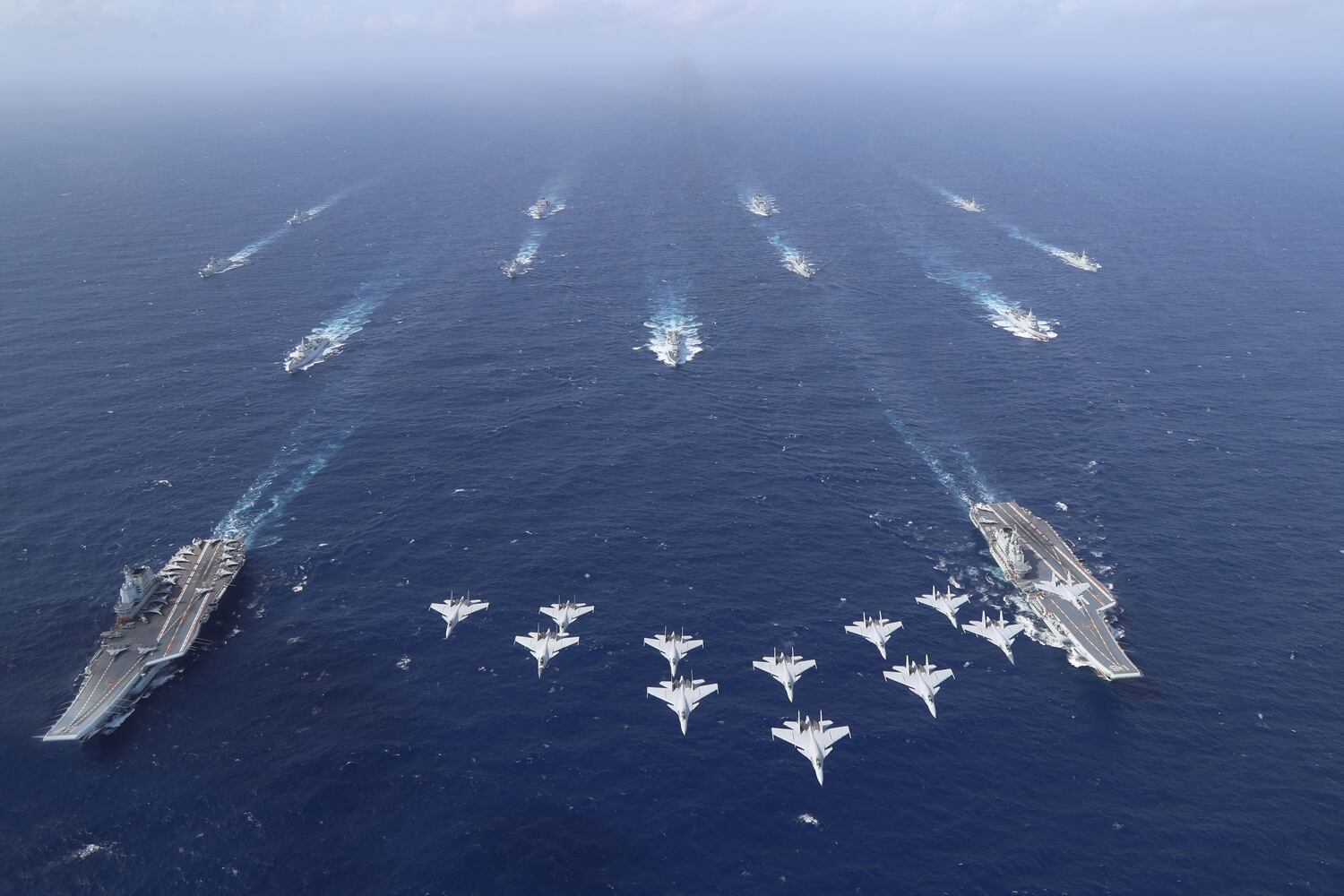
The navy released photos and videos featuring the dual carrier formations led by China’s first aircraft carriers Liaoning and Shandong, with more than 10 destroyers, frigates, and replenishment ships.
According to the Xinhua news agency, the multi-day exercise was conducted between the Mid-Autumn festival (Sept. 17) and the National Day holidays (Oct 1-7).
RELATED STORIES
Increased risk of conflict in South China Sea, forum warns
China, Vietnam talk business during Premier Li Qiang’s visit to Hanoi
China’s third aircraft carrier completes first sea trial
Over the past year, Beijing has intensified its activities in the South China Sea, where it has disputes with some of its neighbors, including Vietnam and the Philippines.
Euan Graham, a senior analyst at the Australian Strategic Policy Institute, told a forum on the South China Sea that while in the last 15 years or so, China mainly usedg coercive tactics known as gray-zone activities, “the number and intensity of incidents involving physical force and threat of armed violence has increased.”
Maritime tensions between China and the Philippines have risen sharply this year, as well as between China and Taiwan, which Beijing considers a Chinese province that shoul be unified with the mainland, by force if necessary.
On Oct. 14, the Chinese military launched a large-scale exercise, called Joint Sword-2024B, in the air and waters of the Taiwan Strait and around Taiwan island.
Edited by Mike Firn.
This content originally appeared on Radio Free Asia and was authored by RFA Staff.
This post was originally published on Radio Free.
North Korea launched a suspected intercontinental ballistic missile off its east coast early on Thursday, South Korea’s Yonhap news agency reported, citing its Joint Chiefs of Staff, or JCS.
The missile was fired on a “lofted trajectory,” at 7.10 a.m. (6.10 p.m. ET on Wednesday) from near the North Korean capital, Pyongyang, the JCS said. Japan said it fell into the sea about 300 kilometers (190 miles) west of its Okushiri Island an hour and 27 minutes later, the Reuters news agency reported.
“Amid a heightened readiness posture, our military maintains full readiness as we closely share North Korean ballistic information with U.S. and Japanese authorities,” Yonhap quoted the JCS as saying.
South Korea’s military warned on Wednesday that North Korea has completed preparations to test an ICBM, with a launch possibly timed to coincide with the Nov. 5 U.S. presidential election.
If confirmed to be an intercontinental ballistic missile, or ICBM, it would be North Korea’s first launch this year. Its last ICBM test was in December when it fired its latest solid-fueled ICBM, the Hwasong-18.
South Korea’s military also warned on Wednesday that the North had completed preparations to test a nuclear device, possibly around the time of the U.S. election. North Korea has conducted six nuclear tests since 2006, all of them underground at the Punggye-ri site. Its last nuclear test was in 2017.
Thursday’s missile test came hours after South Korean and U.S. defense chiefs, at their annual meeting at the Pentagon, criticized North Korea for sending thousands of troops to Russia to help it with the war in Ukraine.
Washington and Seoul have said that Pyongyang has dispatched 10,000-11,000 troops to Russia in recent days.
Edited by Mike Firn.
This content originally appeared on Radio Free Asia and was authored by RFA Staff.
This post was originally published on Radio Free.
This content originally appeared on Radio Free Asia and was authored by Radio Free Asia.
This post was originally published on Radio Free.
By RFA Staff
Asia-Pacific nations should observe their obligation not to use, or threaten to use, force amid increased tensions in the South China Sea, an international panel of experts has warned.
Participants at a two-day conference ending on Thursday, hosted by Vietnam, examined how the principle of non-use of force in resolving disputes should be understood and upheld by the claimants of the South China Sea and the international community.
The conference “Navigating Narratives, Nurturing Norms” looked at “the complex evolution of international relations, the proliferation of proxy actors, and the politicization and weaponization of interdependencies.”
Euan Graham, a senior analyst at the Australian Strategic Policy Institute, or ASPI, said that compared with other regions such as the Middle East and Europe, “there have been remarkably few armed conflicts between states” in the Asia-Pacific.
However, there have been sporadic armed clashes, he noted. The last serious one was in 1988 between China and Vietnam over the Johnson South Reef in the Spratlys that resulted in the deaths of 64 Vietnamese soldiers.
“In the last 15 years or so, the South China Sea has become more associated with China’s use of coercive tactics including physical confrontation but below the threshold of military force, commonly called gray-zone activities … presenting a clear threat of force,” Graham said, warning that this “gray-zone” has now adopted a noticeable “darker shade.”
“The number and intensity of incidents involving physical force and threat of armed violence has increased,” he added.

First-hand experience
Tensions between China and the Philippines have risen sharply this year in a part of the South China Sea that is under Manila’s jurisdiction but also falls within the so-called nine-dash line that Beijing prints on its maps to back its claim to most of the sea.
Philippine Coast Guard Spokesperson Jay Tarriela told the conference that his country has first-hand experience of China’s aggression but other countries in the region also suffered from its “illegal and unacceptable behavior.”
Tarriela said that from Manila’s perspective, in order to achieve a peaceful solution of disputes in the South China Sea, regional countries should forge a common understanding and mutual respect based on international law, and ensure transparency in their policies. He also called for collective actions amongst all claimants in the sea.
“The Philippines’ struggle extends beyond our sovereignty, it is a fight for everyone,” said Tarriela. “We should not allow any state actor to circumvent international law and to veto the U.N. Charter.”
“Remaining silent about such bullying tactics is tantamount to condoning such actions,” the coast guard commodore said, pointing to “the lessons from the two World Wars.”
China builds spy base on disputed island
Joint exercise Sama Sama enters key phase
East Asia fails to adopt South China Sea statement
Responding to the criticism of her country’s policies in the South China Sea, a Chinese expert said that Beijing had already exercised much restraint and patience.
Lei Xiaolu, a professor at the China Institute of Boundary and Ocean Studies at Wuhan University, said that other countries should be aware that “China will never abandon our claims over four archipelagos and the waters in the South China Sea.”
Maritime disputes take time, patience and political will to achieve final solutions, Lei said, urging parties to “sit down to discuss in good faith.”
Most Southeast Asian countries already have a bilateral consultation mechanism with China, according to the Chinese scholar, who noted that in the second half of this year “there’s already been an intensified diplomatic communication between China and the Philippines to de-escalate tensions at sea.”
“In many cases, it’s very difficult to determine whether it was the use of force in hostility or the use of force in a law enforcement activity,” Lei argued, adding that only increased communication, not only through diplomatic channels but also by other government agencies from relevant countries, could help prevent conflict.
Yet, the risk of escalation remains, ASPI’s Graham said.
“The maritime enforcement has very limited utility without an accompanying hard power,” or the military presence at the scene, he said.
Edited by Mike Firn
This content originally appeared on Radio Free Asia and was authored by By RFA Staff.
This post was originally published on Radio Free.
This content originally appeared on Radio Free Asia and was authored by Radio Free Asia.
This post was originally published on Radio Free.
New York, October 23, 2024—The Rapid Support Forces (RSF) must immediately return the home of journalist Ashraf Omer Ibrahim — a South Darfur Radio and Television correspondent and a local Al-Zarqa satellite channel presenter — after the paramilitary group seized it last week in Nyala, South Darfur, the Committee to Protect Journalists said Wednesday.
“The seizure of Sudanese journalist Ashraf Omer Ibrahim’s home by the RSF in Nyala is completely unacceptable, especially during a time of war when the safety of all civilians is already at heightened risk,” said CPJ Interim MENA Program Coordinator Yeganeh Rezaian. “The RSF must immediately return Ibrahim’s home and cease targeting journalists for their political beliefs.”
In an October 17 statement on Facebook, the Sudanese Journalists’ Union called the seizure of Ibrahim’s home a crime against journalists and “free voices,” accusing the RSF of targeting homes of those they perceive as opponents, and demanded the return of Ibrahim’s home.
Ibrahim learned about the seizure of his home while living in eastern Port Sudan, where he relocated for safety after Nyala fell under the control of the RSF last year, according to a local journalist familiar with the case who spoke to CPJ via messaging app on the condition of anonymity, citing fear of reprisal.
The RSF has been engaged in a civil war with the Sudanese Armed Forces since April 2023, killing thousands, displacing millions, and resulting in grave threats to the media.
CPJ’s email to the RSF about the seizure of Ibrahim’s home received no reply.
This content originally appeared on Committee to Protect Journalists and was authored by CPJ Staff.
This post was originally published on Radio Free.
This content originally appeared on Radio Free Asia and was authored by Radio Free Asia.
This post was originally published on Radio Free.
Joint exercise Sama Sama, led by the Philippines and the United States, entered a crucial phase that simulated realistic scenarios in the South China Sea on the same day that China held military drills around Taiwan.
On Monday, China’s Eastern Theater Command held a large-scale exercise – Joint Sword-2024B – in the air and waters of the Taiwan Strait and around Taiwan island to send “a stern warning to the separatist acts of Taiwan independence forces,” a term China normally uses to refer to the Taiwan government.
Just hours later, participating naval forces from the Philippines and the U.S. “successfully conducted a series of advanced maritime drills,” the Armed Forces of the Philippines, or AFP, said in a statement on social media.
They focused on “anti-submarine warfare and joint patrol operations,” it added.
Sama Sama, or Togetherness in the Tagalog language, began last week and continues for two weeks in the waters off northern Philippines facing Taiwan. Its 2024 exercise also involves personnel from Australia, Canada, France and Japan, and observers from the United Kingdom.
The exercise’s area and those of the Chinese drills seemed quite distant from each other but analysts noted that China’s Liaoning aircraft carrier group had sailed into seas around Bashi channel between the Philippines and Taiwan a day earlier and was present to the east of Taiwan during Joint Sword-2024B.
RELATED STORIES
China completes large-scale drills around Taiwan
Six countries join naval drills amid tension with China
US Navy flies maritime patrol aircraft through Taiwan Strait
Key phase
According to the AFP’s statement, the drills on Monday included a Combined Anti-Submarine Exercise, or CASEX, where troops engaged in torpedo drills using the expandable mobile anti-submarine warfare training target, which simulates the characteristics of a submarine. in order to “hone their anti-submarine warfare techniques in a realistic and controlled environment.”
In addition to CASEX, they also conducted a joint and combined night-time patrol that simulated “real-world scenarios of patrolling contested waters.”
The U.S. Navy said in an earlier statement that specialized teams, including diving and explosive ordnance disposal units, “will conduct high-intensity drills focusing on anti-submarine warfare, anti-surface warfare, anti-air warfare, and maritime domain awareness,” – which it said set Sama Sama apart as a more sophisticated exercise in both complexity and scope.
The participating personnel also conducted search-and-rescue, and shipboard casualty care drills, showing that they were “not only focused on combat readiness but also on humanitarian assistance and disaster response, integral aspects of modern naval operations.”

The Royal Canadian Navy, Japan Maritime Self-Defense Force , and other allied navies will take part in later exercises, the AFP said.
Six parties including Brunei, China, Malaysia, the Philippines, Taiwan and Vietnam hold claims to parts of the South China Sea but China’s claim is by far the most expansive. Tensions have risen recently between Beijing and Manila over some reefs, around which both sides have increased patrols.
Sama Sama, now in its eighth iteration, “reflects the spirit of the decades-long partnership between allies in the region” and is not targeted at any country, the U.S. Navy said.
Edited by Taejun Kang and Mike Firn.
This content originally appeared on Radio Free Asia and was authored by By RFA Staff.
This post was originally published on Radio Free.